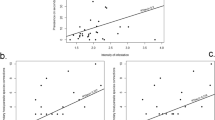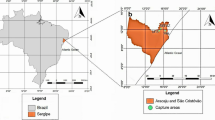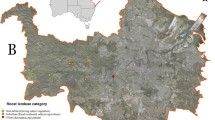Abstract
Roost ectoparasites are believed to have a negative impact on fitness of their hosts as birds or mammals. Previous studies were mostly focussed on the synchronization between reproduction cycles of ectoparasites and hosts living in infested roosts. However, to date, it has not been examined how fast ectoparasites colonize new, non-infested roosts and thus increasing the impact on the local populations of hosts. The parasite–host model was studied, including bat bugs Cimex pipistrelli and soprano pipistrelles Pipistrellus pygmaeus, where bat behaviour was observed which tended to reduce the parasite load in bat roosts. We investigated (1) whether bats change their roosting behaviour when we discontinued synchronization of their reproduction and the life cycle of the bat bugs and (2) how fast and which stages of bat bugs reoccupy cleaned roosts. In a 3-year field experiment, we removed all bat bugs from six bat boxes in each spring. Pipistrelles bred young in all non-infested boxes during these 3 years. In addition, 8 years of regular observations before this experiment indicate that bats avoided breeding in the same bat boxes at all. Bat bugs were found again in clean boxes in mid-May. However, their densities did not maximise before the beginning of June, before parturition. A re-appearance of bugs was observed after 21–56 days after the first bat visit. Adult bugs, mainly females, colonised cleaned boxes first though at the same time there were a lot of younger and smaller instars in non-manipulated roosts in the vicinity.



Similar content being viewed by others
References
Balvín O, Munclinger P, Kratochvíl L, Vilímová J (2012) Mitochondrial DNA and morphology show independent evolutionary histories of bedbug Cimex lectularius (Heteroptera: Cimicidae) on bats and humans. Parasitol Res 111:457–469
Barclay RMR, Kurta A (2007) Ecology and behaviour of bats roosting in tree cavities and under bark. In: Lacki MJ, Hayes JP, Kurta A (eds) Bats in forests, conservation and management. Johns Hopkins University Press, Baltimore, pp 17–60
Bartonička T (2008) Cimex pipistrelli (Heteroptera, Cimicidae) and the dispersal propensity of bats: an experimental study. Parasitol Res 104:163–168
Bartonička T (2010) Survival rate of bat bugs (Cimex pipistrelli, Heteroptera) under different microclimatic conditions. Parasitol Res 107:827–833
Bartonička T, Gaisler J (2007) Seasonal dynamics in the numbers of parasitic bugs (Heteroptera, Cimicidae): a possible cause of roost switching in bats (Chiroptera, Vespertilionidae). Parasitol Res 100:1323–1330
Bartonička T, Řehák Z (2007) Influence of the microclimate of bat boxes on their occupation by the soprano pipistrelle Pipistrellus pygmaeus: possible cause of roost switching. Acta Chiropterol 9:517–526
Bartonička T, Bielik A, Řehák Z (2008) Roost switching and activity patterns n the soprano pipistrelle, Pipistrellus pygmaeus, during lactation. Ann Zool Fenn 45:503–512
Christe P, Oppliger A, Richner H (1994) Ectoparasite affects choice and use of roost sites in the great tit, Parus major. Anim Behav 47:895–898
Côte IM, Poulin R (1995) Parasitism and group size in social animals: a meta-analysis. Behav Ecol 6:159–165
Davis NT (1966) Reproductive physiology. In: Usinger RL (ed) Monograph of cimicidae (Hemiptera–Heteroptera), entomological society of America. Thomas Say Foundation, New York, pp 167–178
Dick CW, Esberard CEL, Graciolli G, Bergallo HG, Gettinger D (2009) Assessing host specificity of obligate ectoparasites in the absence of dispersal barriers. Parasitol Res 105(5):1345–1349
East ML, Höner OP, Wachter B, Wilhelm K, Burke T, Hofer H (2009) Maternal effects on offspring social status in spotted hyenas. Behav Ecol 20:478–483
Feyerabend F, Simon M (2000) Use of roosts and roost switching in a summer colony of 45 kHz phonic type pipistrelle bats Pipistrellus pipistrellus Schreber, 1774. Myotis 38:51–59
Gannon MR, Willig MR (1995) Ecology of ectoparasites from tropical bats. Environ Entomol 24:1495–1503
Giorgi MS, Arlettaz R, Christe P, Vogel P (2001) The energetic grooming costs imposed by a parasitic mite (Spinturnix myoti) upon its bat host (Myotis myotis). Pro Royal Soc London B 268:2071–2075
Heise G (1988) Zum Transport von Fledermauswanzen (Cimicidae) durch ihre Wirte. Nyctalus 2:469–473
Jenkins EV, Laine T, Morgan SE, Speakman JR (1998) Roost selection in the pipistrelle bat, Pipistrellus pipistrellus (Chiroptera, Vespertilionidae), in the northeast Scotland. Anim Behav 56:909–917
Kerth G, König B (1999) Fission, fusion and non random associations in female Bechstein’s bats (Myotis bechsteinii). Behaviour 136:1187–1202
Kerth G, Weismann K, König B (2001) Day roost selec tion in female Bechstein’s bats (Myotis bechsteinii): a field experiment to determine the influence of roost temperature. Oecologia 126:1–9
Kummer H (1971) Primate societies: Group techniques of ecological adaptations. Aldine-Atherton Publisher, Chicago
Kunz TH, Lumsden LF (2003) Ecology of cavity and foliage roosting bats. In: Kunz TH, Fenton MB (eds) Bat ecology. The University of Chicago Press, Chicago, pp 3–39
Kunz TH, Stern AA (1995) Maternal investment and post-natal growth in bats. Symp Zool Soc Lond 67:123–138
Lewis SE (1996) Low roost-site fidelity in Pallid bats: associated factors and effect on group stability. Behav Ecol Sociobiol 39:335–344
Montes C, Cuadrillero C, Villela D (2002) Maintenance of a laboratory colony of Cimex lectularius (Hemiptera: Cimicidae) using an artificial feeding technique. J Med Entomol 39:675–679
Moore J (2002) Parasites and the behavior of animals. Oxford series in ecology and evolution. Oxford University Press, New York
O’Donnell CFJ (2000) Cryptic local populations in a temperate rainforest bat Chalinobolus tuberculatus in New Zealand. Anim Conserv 3:287–297
Pfiester M, Koehler PG, Pereira RM (2009) Effect of population structure and size on aggregation behavior of Cimex lectularius (Hemiptera: Cimicidae). J Med Entomol 46:1015–1050
Pontier D, Gaillard JM, Allainé D (1993) Maternal investment per offspring and demographic tactics in placental mammals. Oikos 66:424–430
Read AF, Harvey PH (1989) Life history differences among the eutherian radiations. J Zool Lond 219:329–353
Reinhart K, Siva-Jothy MT (2007) Biology of the bed bugs (Cimicidae). Ann Rev Entomol 52:351–374
Reckardt K, Kerth G (2007) Roost selection and roost switching of female Bechstein’s bats (Myotis bechsteinii) as a strategy of parasite avoidance. Oecologia 154:581–588
Russo D, Cistrone L, Jones G, Mazzoleni S (2004) Roost selection by barbastelle bats (Barbastella barbastellus, Chiroptera: Vespertiliniodae) in beech woodlands of central Italy: consequences for conservation. Biol Conserv 117:73–81
Swift SM (1980) Activity patterns of pipistrelle bats (Pipistrellus pipistrellus) in north-east Scotland. J Zool Lond 190:285–295
Usinger RL (1966) Monograph of Cimicidae (Hemiptera–Heteroptera). Entomological Society of America. Thomas Say Foundation, New York
Vonhof MJ, Barclay RMR (1996) Roost-site selection and roosting ecology of forest-dwelling bats in southern British Columbia. Can J Zool 74:1797–1805
Webb PI, Speakman JR, Racey PA (1996) Population dynamics of a maternity colony of the pipistrelle bats (Pipistrellus pipistrellus) in north-east Scotland. J Zool Lond 240:777–780
Willis CKR, Brigham RM (2004) Roost switching, roost sharing and social cohesion: forest-dwelling big brown bats, Eptesicus fuscus, conform to the fission-fusion model. Anim Behav 68:495–505
Willis CKG, Brigham RM (2005) Physiological and ecological aspects of roost selection by reproductive female Hoary bats (Lasiurus cinereus). J Mammal 86:85–94
Willis CKG, Brigham RM (2007) Social thermoregulation, not cavity microclimate, explain forest roost preferences in a cavity-dwelling bat. Behav Ecol Sociobiol 62:97–108
Acknowledgments
We are very grateful to J. Gaisler for his valuable comments on the manuscript and Josef Chytil for help with fieldwork. This study was supported by grant no. 206/07/P098 of the Science Foundation of the Czech Republic and the Czech Bat Conservation Trust, and by grants from the Ministry of the Environment and the Ministry of Education, Youth and Sports of the Czech Republic no. MSM0021622416. The boxes were checked under the licence no. 922/93-OOP/2884/93 and 137/06/38/MK/E/07 of the Ministry of Environment of the Czech Republic. The authors have also been authorized to handle free-living bats according to the certificate of competency no. 104/2002-V4 (§17, law no. 246/1992).
Author information
Authors and Affiliations
Corresponding author
Rights and permissions
About this article
Cite this article
Bartonička, T., Růžičková, L. Recolonization of bat roost by bat bugs (Cimex pipistrelli): could parasite load be a cause of bat roost switching?. Parasitol Res 112, 1615–1622 (2013). https://doi.org/10.1007/s00436-013-3316-4
Received:
Accepted:
Published:
Issue Date:
DOI: https://doi.org/10.1007/s00436-013-3316-4




